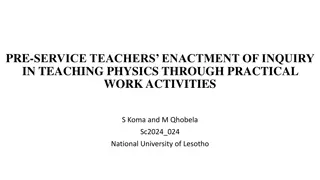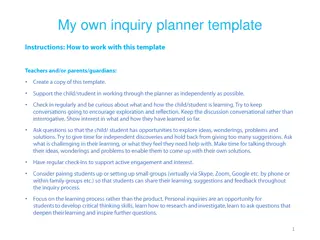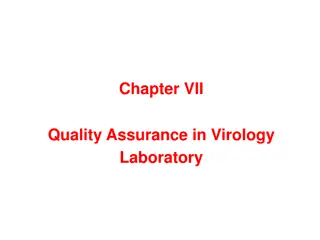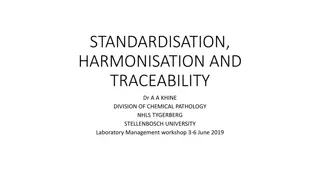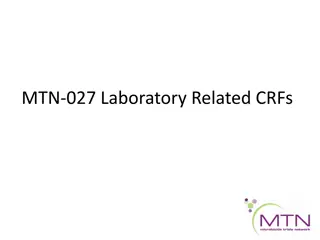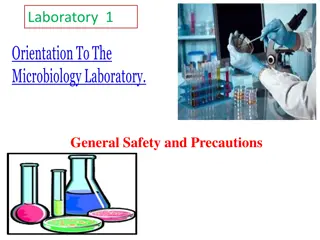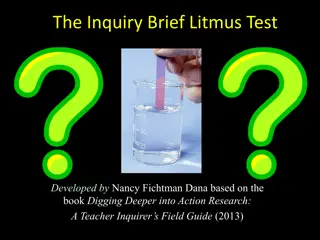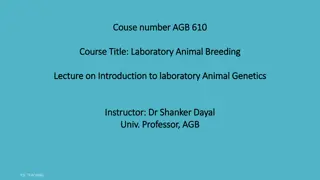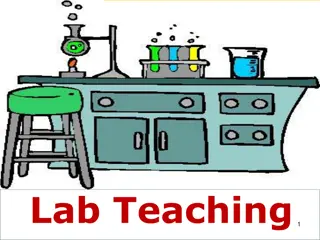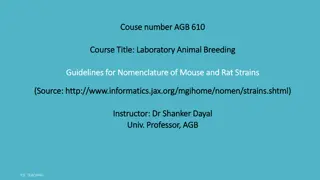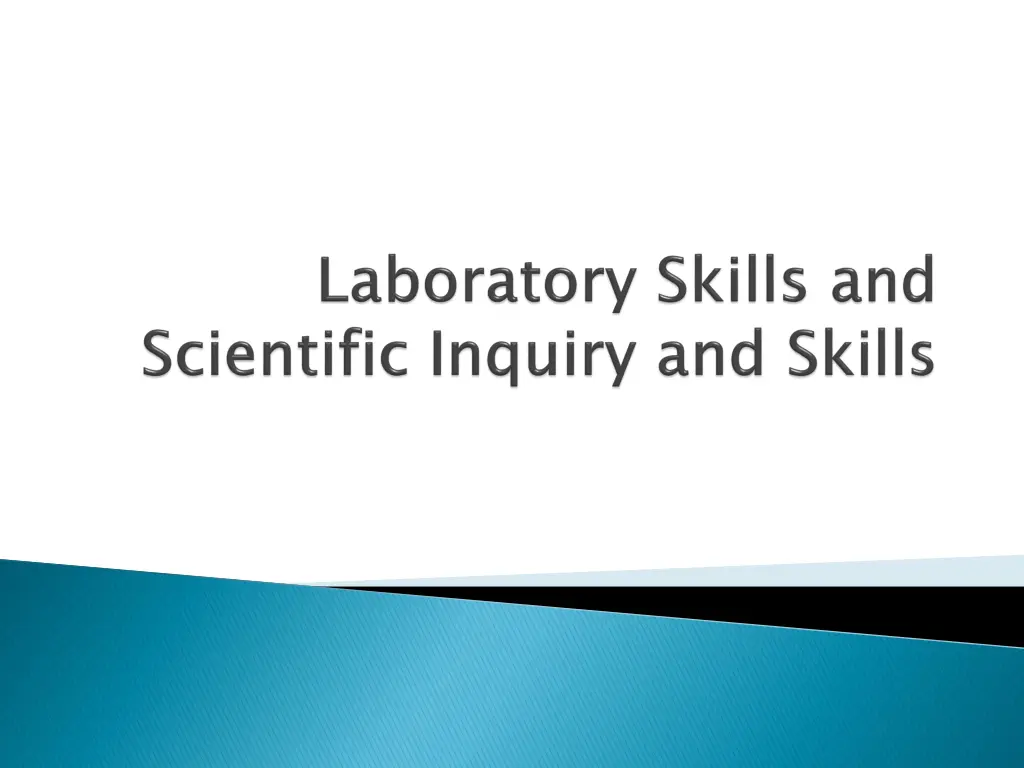
Tools and Techniques for Understanding Biology
Discover the tools and techniques essential for understanding the world of biology. From observing and experimenting to utilizing instruments like metric rulers, graduated cylinders, thermometers, and balances, learn how to navigate the fascinating realm of biology with precision and accuracy.
Download Presentation

Please find below an Image/Link to download the presentation.
The content on the website is provided AS IS for your information and personal use only. It may not be sold, licensed, or shared on other websites without obtaining consent from the author. If you encounter any issues during the download, it is possible that the publisher has removed the file from their server.
You are allowed to download the files provided on this website for personal or commercial use, subject to the condition that they are used lawfully. All files are the property of their respective owners.
The content on the website is provided AS IS for your information and personal use only. It may not be sold, licensed, or shared on other websites without obtaining consent from the author.
E N D
Presentation Transcript
Biology is all about trying to understand the world that we live in To understand we need to observe and experiment To do this, we need tools and techniques
Base units are: Meter, liter, gram, cubic centimeter, second, degree Celsius Create the scale:
Example: Length in cm Length in mm Length in m Length in m
Metric Ruler Used for length measurement Centimeters or Millimeters Micrometers for microscopic organisms
Graduated cylinder Used to measure volume Liters or Milliliters Always measure from the bottom of the meniscus
Thermometer Used to measure temperature Measured in degrees Celsius Freezing point of water is_______ Boiling point of water is _________ Human body temperature is _________
Balance Used to measure mass (quantity of matter in something) Could use an electric balance or a triple beam balance Balances have to be zero ed, clean and protected
Tool used to sort, name and/or classify a particular organism Series of steps that typically have two steps that either identify an organism or leads to another set of steps that can. The key must separate organisms into groups to work properly
1A. Organism is prokaryotic-------Kingdom Monera 1B. Organism is eukaryotic-------go to 2 2A. Organism is unicellular or colonial----kingdom Protista 2B. Organism is multicellular-------go to 3 3A. Organism is autotrophic-----Kingdom Plantae 3B. Organism is heterotrophic-------go to 4 4A. Organism absorbs nutrients-------Kingdom Fungi 4B. Organism ingest nutrients -------Kingdom Animalia
Gel electrophoresis Allows molecules to be separated based on size DNA and Proteins Separation based on charge Wells are made in a gel, the sample is placed in the wells The gel is placed between positive and negative charges Move toward opposite charges Smaller move farther Can compare results to find similar organisms
Used to separate mixtures of molecules There are different types of chromatography: Paper chromatography: a mixture is placed on a paper, the tip of the paper is then placed in a solvent (solution that can dissolve the mixture). The solvent travels up the paper, dissolving the mixture and separating it into its components along the way. Components move based on how well they are attracted to the paper or solvent. Liquid and Gas chromatography
Stains are used to make cell structures more visible Commonly use iodine or methylene blue Can be used to identify parts of a cell or differences between cell types An indicator is a substance that changes color when it contacts certain chemicals. pH paper is used to test the acidic or basic levels Iodine (lugol s) solution changes from golden brown to blue-black in the presence of starch
Observations are the key to understanding biology and the living environment. Dissection is a tool we can use to understand how organisms work
Dissection is the examination of preserved specimens, provides a way to: Observe similarities and differences that exist among species Understand the relationship between form and function Expose and identify the internal structures of organisms To dissect we need to know what equipment to use and how to use it properly as well as a clean and organized work area
Equipment Dissection pan Equipment Use Similar to cake pan but with wax or rubber on the bottom. The specimen is placed within the pan Large T pins used to anchor the specimen to dissection pan Sharp instrument used to open specimen Used for cutting open or removing parts of specimen. May have two sharp points or one sharp and one blunt point Used to move, lift, point out, or gently pull apart organs or structures. Use Dissecting pins Scalpel Scissors Probe/Teasing needle/Dissecting needle Tweezers/Forceps Safety goggles Used to lift, move or pry part objects. Protect eyes from accidental splashes
Use evidence to support ideas Earth is flat -----Earth is round To investigate scientifically Question! Observe and Infer Experiment Collect and organize data Find evidence and draw conclusions Repeat the experiment many times Review with peers
Observations are things or events made using the five senses or tools Inference = Conclusions or ideas based on observations Assumptions = belief that something is true Opinion = ideas that may or may not have any basis in fact Can be biased Leave out of data collection and analysis
After you have asked questions Research Find background info Develop a hypothesis Design your experiment to test that hypothesis
Series of steps to create a good experiment 1. what is the question or problem 2. formulate a hypothesis 3. design and conduct a controlled experiment. What is the independent variable in this experiment? 4. Make observations and collect data. What I the dependent variable in this experiment 5. Analyze data 6. Draw conclusions. Accept or refute hypothesis 7. Report findings for per review.
A good hypothesis has an independent and a dependent variable. Independent = cause. The single factor that the scientist is testing. What the experimental group will receive that the control does not. Dependent = effect What is measured and observed. What is affected by the independent variable. Experiments cannot prove a hypothesis but only support it or fail to support it. I think that
Each experiment needs an experimental group. This is the group that will test the cause and effect relationship between the hypothesis. The control group will be a point of reference to compare the experimental group to. It gets normal conditions Everything else must stay the same Can only test one variable!
Data is what is collected as results from experiments. It can be organized into diagrams, tables, charts, graphs, and equations. We must then use the data to make inferences, predictions, and conclusions
Things to include within the conclusion: Does the data agree with or disagree with the original hypothesis? Statement of what the data tells us How can this experiment be more valid? Why might other scientists want to conduct this experiment? Results must be reported and must be able to be repeated by others Peer review
Graphs are useful for analyzing data. Line Graph Used to show the relationship between two variables. Independent variable is place along the X-axis and the dependent variable is placed on the Y-axis. All graphs need a title, all axis must be labeled with units, the appropriate scale on the axis must be equal intervals, always plot the data point, draw a circle around them, and connect the consecutive points.
Amount of rain (inches) Amount of rain (inches) Amount of grain produced (bushels/acre) 50 60 65 70 65 60 20 Amount of grain produced (bushels/acre) 7 9 10 11 12 13 15
Pie charts show parts of wholes or percentages Create your own pie chart: How many hours per day to you spend doing the following: Sleeping______ Watching TV______ In Class________ Playing_____ Eating______ Other______
Bar graphs or histogram also represent the relationship between two variables. The x and y-axis are similar to line graphs.
We need to know how to properly use safety equipment in the lab area Safety equipment: fire extinguisher, safety shower, eye wash station, fire blanket, emergency gas shutoff Goggles, aprons, gloves
Read all directions before starting Questions? Ask! Don t do anything without permission No eating or drinking When heating, slant test tubes away from others and never heat a closed container Never inhale or taste chemicals or objects If spills, wash off skin immediately and tell me. Tell your teacher if you get hurt Tie back hair, secure loose clothing
Know the properties of chemicals you are using Know what equipment to use Don t use damaged equipment Never pour chemicals back into original bottles or switch equipment between chemicals Use the proper equipment Always clean up your space, turn off gas and water and disconnect electrical devices Dispose of chemicals according to instructions Wash your hands!
Microscope is made of lens to make objects easier to see Magnification makes the objects appear bigger Stereoscopes (dissecting microscopes) Two ocular eyepiece lenses Magnification is low, image is in 3-D and not reversed Compound light microscope One ocular lens Uses light to see images in eyepiece Image is magnified by both lens (ocular lens and objective lens) Total magnification is measured by multiplying the magnification of the eyepiece by the magnification of the objective
Eyepiece and Ocular Lens Objective Lenses Stage Diaphragm Light Source Coarse Adjustment Fine Adjustment
Only clean microscopes with lens paper! Image will be upside down and backwards Move the slide in the opposite direction to center the object Field appears darker with higher magnification Use the diaphragm to adjust the light Make sure the object is always in the center of the field of view When going to higher power the field of view gets smaller
Nucleus Round, dense, dark-stained, located anywhere Cytoplasm Fills the cell, clear-very grainy, may or may not be visible Cell membrane Surrounds cytoplasm, both animal and plant cells Cell wall Surround cell membrane in plant cells Chloroplast Green, oval, photosynthetic Mitochondria Oval, cellular respiration (energy production) Vacuoles Often clear areas in cytoplasm, may be specialized Plants are large and fluid-filled Chromosomes Easier to see in cells undergoing division (mitosis and meiosis), Dark stained and thread like, Genetic material

